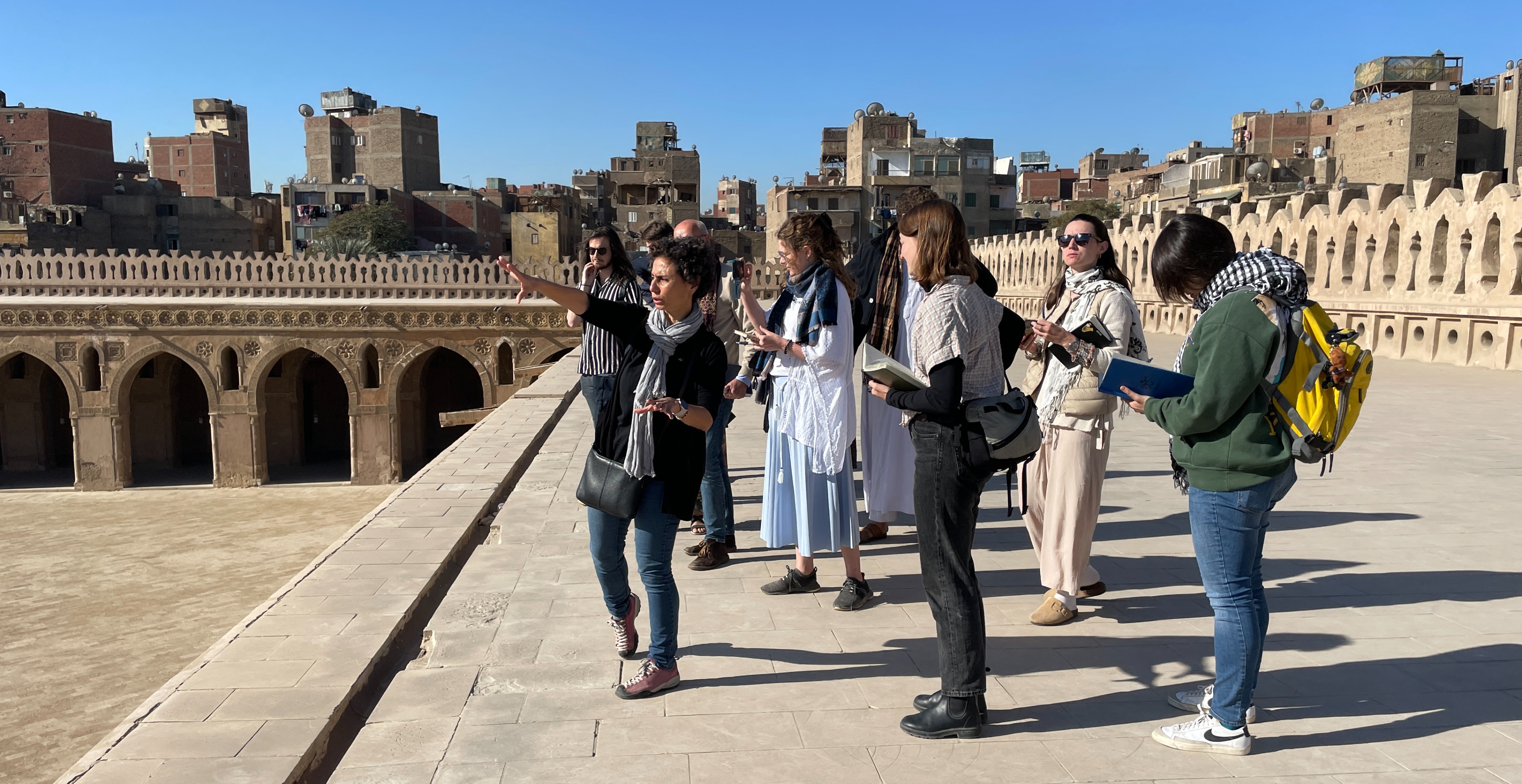Week 6: 11–17 February
If we strictly consider that a new day, and therefore a new week in the Cairo Semester, starts at 00.00h, this week started differently than the previous ones. After a quick visit to our trustworthy provider, Sakara Bazar, some el-Mansour Mohammed tenants started with an improvised but enthusiastic dancing and singing gathering. We got to shake our bodies and, with that, the tiredness and melancholy of having left Upper Egypt.
Our first official visit for this week's programme was to Islamic Cairo, accompanied by Dina Bakhoum, who guided us through off the beaten track monuments, including the mosque of Ibn Tulun with its very particular minaret that granted us an exceptional view of 'the city of 1000 minarets'; the madrasa of Sultan Hasan, where we arrived just in time for the afternoon prayer; and the spectacular mosque of al-Rifai. We also visited the Italian-Egyptian Center for Restoration and Archaeology located in the Madrasa of Qusun-Yasbak-Aqbardi, where Dina started her journey as a conservator and told us about all the historical, cultural and archaeological details of the building. After the busy morning, having koshary and rice pudding for lunch helped us regain strength, and shortly after, we got back to Zamalek and spent the rest of the day working on our assignments.

Monday and Tuesday were the days when the IFAO-DAIK conference ‘The Northern and Southern Heliopoleis’ took place. Some of us attended the talks, which proved to be interesting as they provided a broad perspective on the research projects conducted in the area from different point of views. The cookies, wine and catering of the IFAO and DAIK were similarly interesting. Others decided to spend the day self-studying, doing laundry, or just having some rest. On the more adventurous side, Omar and I decided to go to Tanis (San el-Hagar), enduring a very 'baladi' journey by microbus to get to the unfrequented archaeological site. We were able to see the re-erected obelisks, and were very lucky to have the opportunity to visit interesting parts of the site that gave us a real Indiana Jones experience (very fitting since Tanis presumably was the location where Indiana Jones found the Lost Ark). I never imagined how handy it would be to carry a torch everywhere!

Wednesday was spent mainly preparing our progress reports on our final paper, which took place at NVIC the next day, just before the weekly lecture. It was the first time in several weeks that we sat in a classroom environment and presented our topics. It was certainly entertaining and stimulating to see our different interests, which ranged from animal-shaped clappers, royal weights, fans and dolls to glass vessels, false doors and all the way to a legal stela, a papyrus or a group of ostraca. That afternoon was rainy in Cairo, but that did not stop the NVIC lecture by Sergio Alarcón Robledo on the archives of the North Saqqara Plateau and the analysis of acoustic phenomena on several funerary structures. This innovative approach to studying funerary architecture broadened our scope of the multisensorial spectre of monumentality in ancient times. After the drinks, some of us decided to go out for dinner with Egyptian acquaintances, who took us to Muhammed el-Rafey to have some traditional mixed grills (with an unpredicted electricity cut), to el-Karnak for special deserts, and finally to have some tea within the narrow streets of the Khan el-Khalili area. It was nice to see Islamic Cairo at night, it certainly gives you a different perspective of the monuments, the people, and the city's nightlife.

When we were approaching the end of what seemed to be a calm week, on Friday morning, we received the terrible news that Dr. Rudolf de Jong, the director of NVIC, had unexpectedly passed away. We want to send his family and friends our deepest condolences and warm thoughts from the Egyptology students.

Gemma Blanch Soriano

